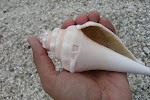Today in the CNMI, we get to experience a partial solar eclipse. An eclipse of the sun occurs when the Moon passes between the Earth and the Sun. For a short period of time the Moon will block the Sun from view briefly making it seem as if the day turned into night.
Today’s eclipse is one of the longest of the 21st century occurring approximately at 10:55 AM until 1:30 PM (The point of total eclipse lasted 6 minutes and 39 seconds!). This duration is because the Moon is on on its axis to the Earth that is in periapsis or, its closest approach to the Earth. The apparent diameter of the moon is 8% larger than the sun when we view it on Earth. This particular partial eclipse is an annular eclipse, where the moon blocks out all but a small outer rim of the Sun.
The last time we in the CNMI experienced a solar eclipse was the annular solar eclipse of June 11, 2002. The Moon will start obscuring the Sun on Saipan at 11:24 PM and will obscure 77.1% at the most around 12:53 PM. Tinian will have 76.2%`Sun coverage and Luta with the least at 72.1% at the same time.
From the
Saipan Tribune:
The path of the total eclipse will traverse across the North Pacific Ocean and will include the 14 islands of the CNMI. According to the NASA Web site, the path of the Moon’s umbral shadow will begin in India and cross through Nepal, Bangladesh, Bhutan, Myanmar and China. After leaving mainland Asia, the path will cross Japan’s Ryukyu Islands and curve southeast through the Pacific Ocean where the maximum duration of totality reaches 6 minutes 39 seconds. A partial eclipse will be seen within the much broader path of the Moon’s penumbral shadow, which includes most of eastern Asia, Indonesia, and the Pacific Ocean. Also, tips for safely viewing the eclipse are found here.
From Wikipedia.com:
Totality will be visible in many large cities, including Surat, Vadodara, Bhopal, Varanasi, Patna, Dinajpur, Siliguri, Tawang, Guwahati, Chengdu, Nanchong, Chongqing, Yichang, Jingzhou, Wuhan, Huanggang, Hefei, Hangzhou, Wuxir, Huzhou, Suzhou, Jiaxing, Ningbo and Shanghai, as well as over the Three Gorges Dam. According to some experts, Taregana in Bihar is the "best" place to view the event. 
This picture of an eclipse cycle is from
here and it occurred in Adrasan, Turkey and was captured there by awesome professional astrophotographer
Stefan Seip of Stuttgart, Germany. During the 2002 eclipse, my friends on Guam and I kept emailing and updating each other on a chat line about what we were seeing. My friend Bobat wrote, "Yoda says, 'Look not at the Sun directly, or blind you will be!'" That guy cracks me up!
I am sorry but I do not have any photo equipment that can take actual photos of the eclipse but here's a play by play:
11:10 The Sun is still complete.
12:00 The obstruction is like the 4th picture from the right of Stephan Seips photograph.
12:15 The obstruction looks like the 5th picture now. The shadow is moving pretty fast!
12:30 We're on the 6th picture now.12:45 Still on 6th.
12:50 7th!!!
12:59 This is as "total" as were supposed to get: 7th!!!
13:15 Slowly going back to normal. Back to 6th.
Well, that was pretty cool. Thanks for sharing in all the astronomical excitement.
Ti napu.
The Beachcomber








